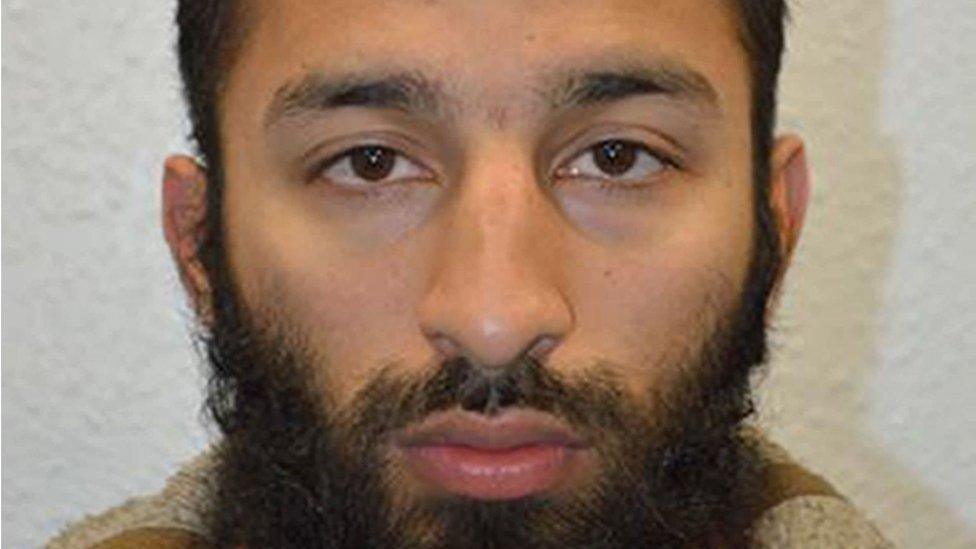London Bridge attack inquests: 'Chaos' hindered medic response
- Published
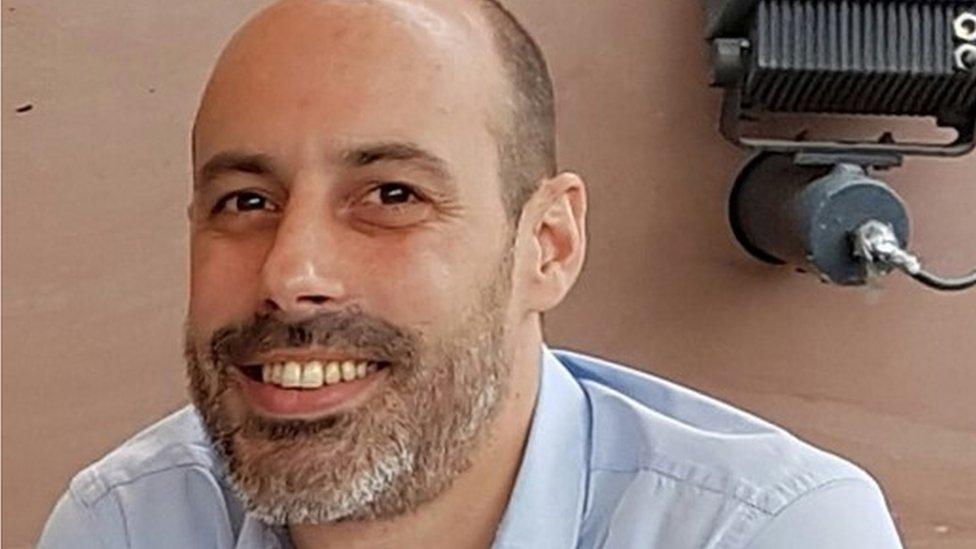
The inquest had heard no paramedics were sent to help Sebastien Belanger where he lay dying
Emergency services bosses took "too long" to decide to send specialist teams to help victims of the London Bridge attack, an inquest has heard.
Paramedics were kept away from the scene of the attack on 3 June 2017 after it was made a "hot zone" - unsafe for staff - the Old Bailey heard.
It was not until three hours after the three attackers had been shot dead that medics entered a courtyard where five of the victims died.
Eight people were killed in the attack.
At the inquests into their deaths. Paul Woodrow, director of operations at London Ambulance Service (LAS), admitted the "chaotic" aftermath of the attack contributed to communication "issues".
Police told medics to stay away from the courtyard area around the Boro Bistro restaurant due to reports of shots being fired nearby, the Old Bailey heard.
Khuram Butt, Rachid Redouane and Youssef Zaghba drove a van into pedestrians on London Bridge and stabbed people in and around Borough Market.
Jonathan Hough QC, counsel to the coroner, said two groups of people had known there were victims in need of urgent treatment in the courtyard outside Boro Bistro.
But neither group told people in the courtyard that ambulance staff had been instructed not to go there.
Mr Woodrow said the "confusion" after the attack "hindered our ability, jointly, to get full situational awareness".
He said LAS was "overflowing with information" and had received 134 related 999 calls on top of 4,400 already received from other incidents on a "busy Saturday".
Paramedics were being given information about various locations within a wide area, which some staff "would not have an intimate knowledge of", he said.
"In the very early stages of these incidents, they really are chaotic, and it's just a fact that we do not have an army of people there to filter the information," he added.
He said co-ordinating conflicting information in a large incident was "not a problem that is easily resolved... it's just not realistic to expect that we can get 100 to 150 people into an area in the first 10 minutes of an incident".
'Golden hour'
The court heard it was about three hours before medics entered the Boro Bistro courtyard, despite the knifemen being killed within 10 minutes of launching their attack.
Gareth Patterson QC, representing the families of some of the victims, said the delay was inconsistent with the need to provide urgent medical care in the "golden hour" following injury.
The inquest had previously heard medics were not told that Sébastien Bélanger, James McMullan and Alexandre Pigeard lay mortally wounded in the courtyard, while a police officer on the scene who had called for help was not told about ambulance resources awaiting casualties on Borough High Street.
Mr Woodrow said: "There was clearly a breakdown in communications at that stage."
Mr Bélanger, 36, Mr McMullan, 32, and Mr Pigeard, 26, were eventually brought to ambulances at a safe meeting point away from the market, but they were already dead.
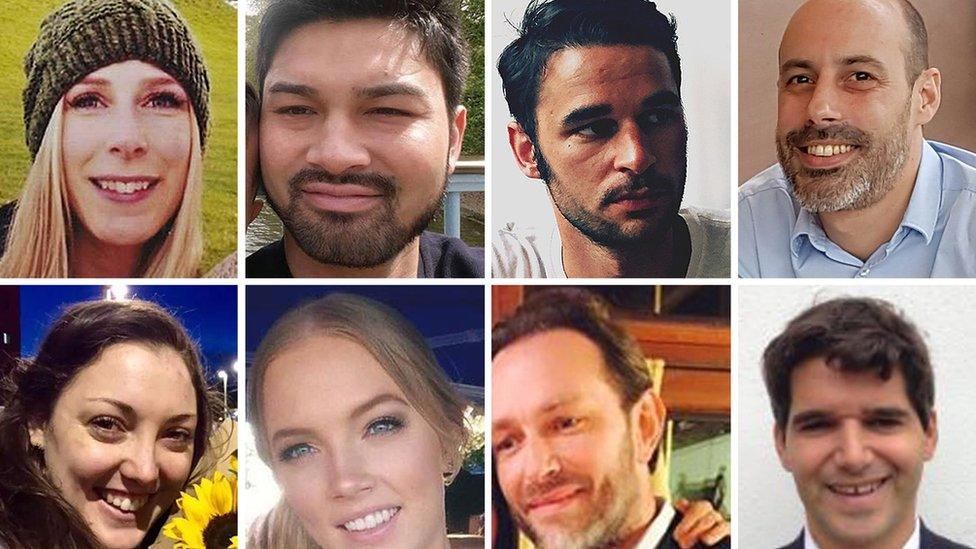
The victims of the London Bridge attack clockwise from top left - Chrissy Archibald, James McMullan, Alexandre Pigeard, Sébastien Bélanger, Ignacio Echeverría, Xavier Thomas, Sara Zelenak, Kirsty Boden
The others killed in the attack were Xavier Thomas, 45, Chrissy Archibald, 30, Sara Zelenak, 21, Kirsty Boden, 28, and Ignacio Echeverría, 39.
Mr Woodrow said LAS could not send specialist ambulance intervention teams - made up of medics, firefighers and armed officers - into a "hot zone" without input from police and fire services.
But he accepted it "took too long to make a decision to commit" to that strategy.
Mr Patterson said there was no evidence of whether or not the courtyard was specifically designated as a "hot zone".
Some volunteer medics were allowed to break the rules to enter the high-risk zone to treat patients, the inquest heard.
"I'm proud of my staff who put themselves in harm's way," Mr Woodrow said. He praised all paramedics for doing "really good work" in "really difficult circumstances".
The inquests continue.
- Published15 May 2019

- Published14 June 2019
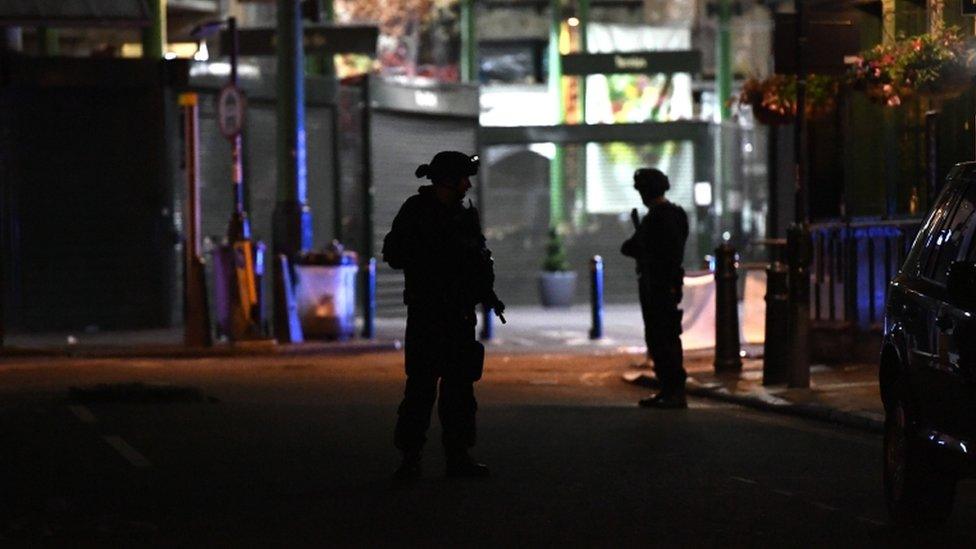
- Published13 June 2019
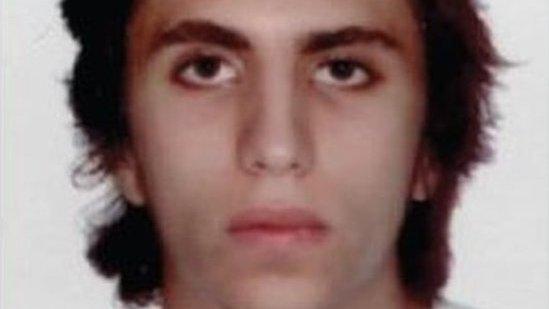
- Published12 June 2019
